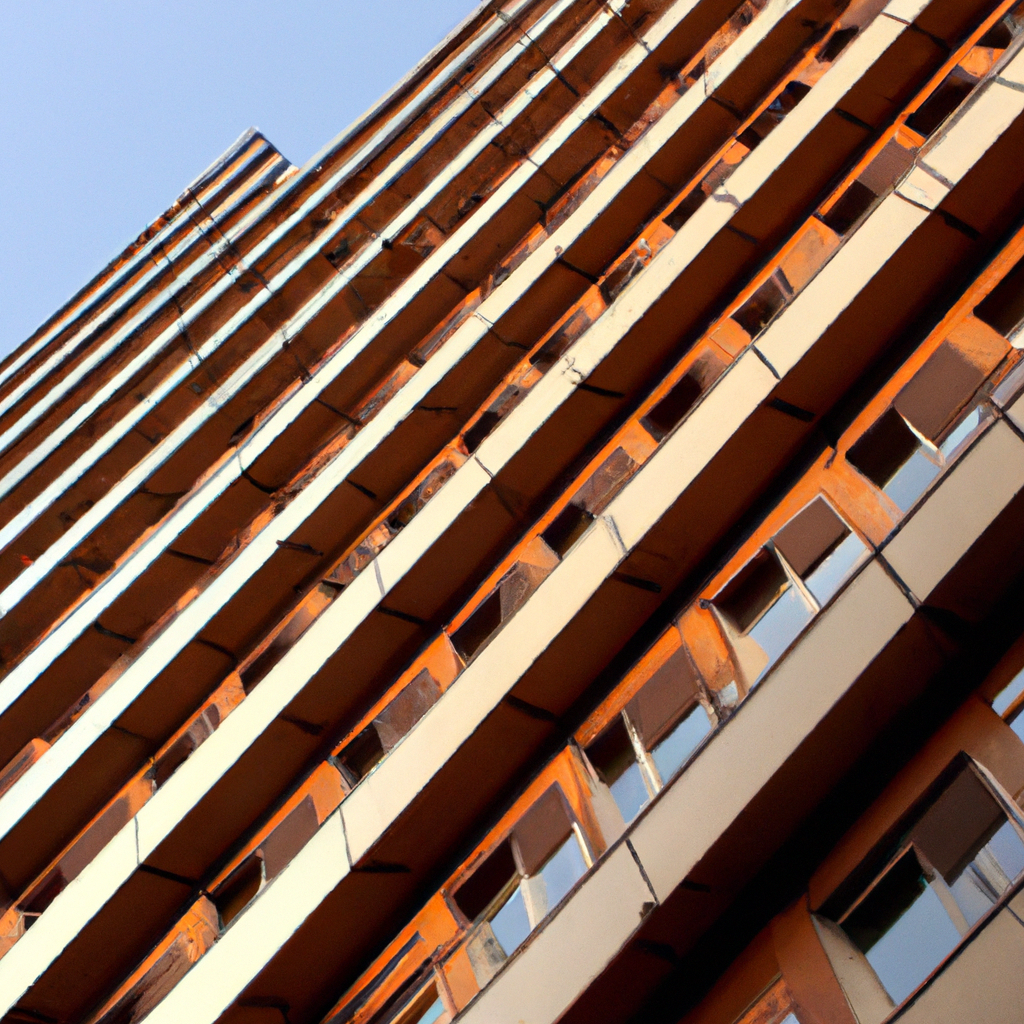The Geometry of Daily Life: Symmetry in Urban Photography
The concept of symmetry has long fascinated artists, architects, and photographers alike. In the realm of urban photography, symmetry plays a crucial role in shaping the visual narrative of our cities. This article delves into the definition of symmetry in urban photography, its historical background, its significance, and various aspects that make it an essential element in capturing the essence of urban environments.
The Definition and Importance of Symmetry
Symmetry refers to a balanced and proportionate arrangement of elements within a composition. In urban photography, it manifests in various forms, from the alignment of buildings to the patterns created by streets and public spaces. The importance of symmetry lies in its ability to create visual harmony, drawing the viewer’s attention and evoking emotional responses. It serves as a tool for photographers to convey messages, highlight architectural beauty, and explore the relationship between space and structure.
A Brief History of Symmetry in Urban Design
Historically, symmetry has been a fundamental principle in urban design and architecture. Ancient civilizations, such as the Greeks and Romans, utilized symmetry to symbolize order and beauty in their constructions. The Parthenon in Athens, with its perfect proportions, exemplifies this principle. As cities evolved, so did the interpretation of symmetry. The Renaissance period saw a resurgence in symmetrical designs, with architects like Andrea Palladio emphasizing balance and harmony in urban layouts.
In the modern era, symmetry continues to influence urban planning. Cities like Washington D.C. showcase symmetrical layouts in their monuments and public spaces, creating a sense of unity and coherence. Understanding this historical context is essential for photographers who aim to capture the essence of urban environments through a symmetrical lens.
Key Characteristics of Symmetry in Urban Photography
When it comes to urban photography, several key characteristics define the use of symmetry:
- Architectural Symmetry: This involves capturing buildings and structures that are symmetrical in design. Notable examples include skyscrapers with mirrored facades and historical buildings that exhibit classical symmetry.
- Reflections: Water bodies, glass surfaces, and polished pavements can create stunning reflections that enhance the symmetry within a photograph. Photographers often seek these elements to add depth and intrigue to their compositions.
- Pattern and Repetition: Urban environments are often filled with repetitive patterns, such as rows of windows or street lamps. These patterns can create a visual rhythm that enhances the overall symmetry in a photograph.
- Leading Lines: Symmetrical compositions often employ leading lines to draw the viewer’s eye towards a focal point. These lines can be roads, pathways, or architectural features that guide the viewer seamlessly through the image.
Applications of Symmetry in Urban Photography
Photographers can apply symmetry in various ways to enhance their urban photography. Here are a few applications:
- Composition Techniques: Utilizing the rule of thirds in conjunction with symmetry can create compelling images. Placing symmetrical elements along the intersecting lines can produce a balanced and harmonious composition.
- Time of Day: The golden hour and blue hour provide unique lighting conditions that can accentuate symmetry. Soft light can highlight the contours of buildings, while reflections in water can become more pronounced.
- Post-Processing: Editing software can be used to enhance symmetrical aspects of a photograph. Adjusting contrast, saturation, and sharpness can bring out the details that make symmetry pop.
In the exploration of urban environments, one can appreciate how The Geometry of Daily Life: Symmetry in Urban Photography reveals hidden narratives within our cities. Exploring Abandoned Spaces and the Beauty of Forgotten Architecture allows photographers to capture the essence of forgotten structures, showcasing their unique symmetry. This intriguing juxtaposition of decay and balance invites viewers to reflect on the stories these spaces hold. By understanding symmetry in urban photography, we can better appreciate the intricate designs and patterns that define our surroundings. Ultimately, these visual elements enhance our connection to the urban landscape and enrich our daily experiences.
Real-World Examples of Symmetry in Urban Photography
To illustrate the impact of symmetry in urban photography, let’s explore a few real-world examples:
- The Sydney Opera House: This iconic structure is renowned for its unique design and symmetrical elements. Photographers often capture the building from various angles, showcasing its mirrored shapes against the backdrop of the Sydney Harbour.
- The Louvre Pyramid: The glass pyramid at the Louvre Museum in Paris is a striking example of modern symmetry. Photographers capture its reflection in the surrounding water, creating a captivating symmetrical image that blends the old with the new.
- The Eiffel Tower: A classic symbol of Paris, the Eiffel Tower’s symmetrical design offers numerous photographic opportunities. From different vantage points, photographers explore its geometry, capturing its grandeur and elegance.
The Future of Symmetry in Urban Photography
As cities continue to evolve, the role of symmetry in urban photography will remain relevant. With the advent of technology, photographers are now equipped with advanced tools to capture and manipulate symmetry in innovative ways. Drones and sophisticated editing software allow for unique perspectives and creative interpretations of urban landscapes.
Moreover, as urban environments become more complex, photographers are challenged to find symmetry in unexpected places. This evolution presents opportunities for new artistic expressions and interpretations of the urban experience.
Encouraging Community Engagement
As you explore the realm of urban photography, consider how symmetry plays a role in your own work. Engage with your local community by sharing your photographs that highlight symmetry. Use social media platforms to showcase your unique perspective on urban environments. Encourage discussions around the importance of symmetry and how it shapes our understanding of the spaces we inhabit.
In conclusion, the geometry of daily life, particularly through the lens of symmetry in urban photography, offers a wealth of opportunities for artistic expression and exploration. By understanding its history, characteristics, and applications, photographers can create compelling narratives that resonate with viewers. The future holds endless possibilities for those willing to seek out symmetry in the bustling urban landscapes that define our lives.






